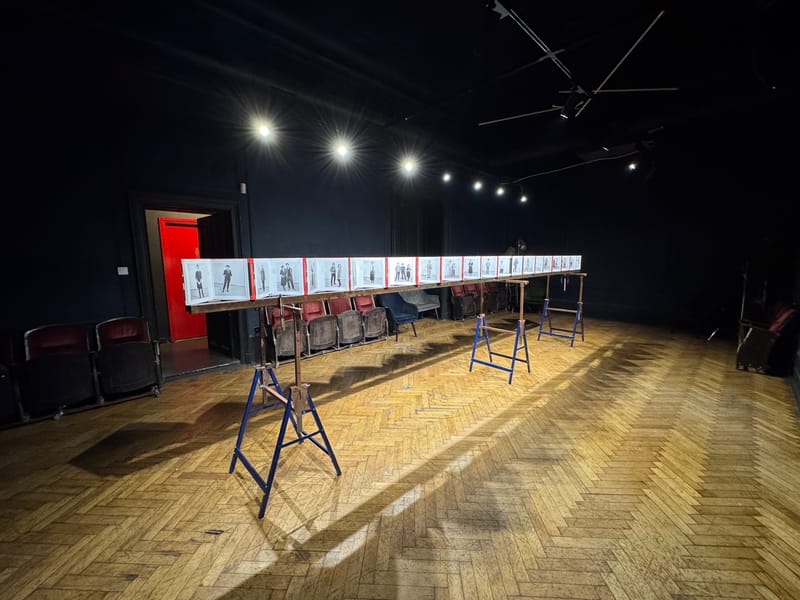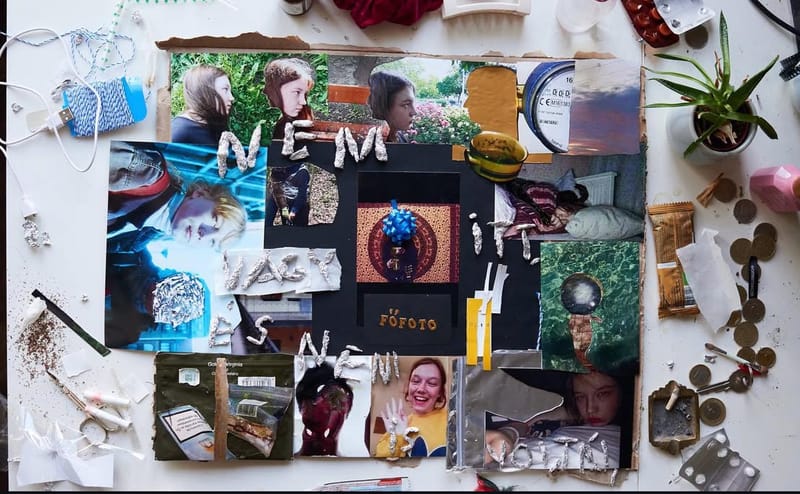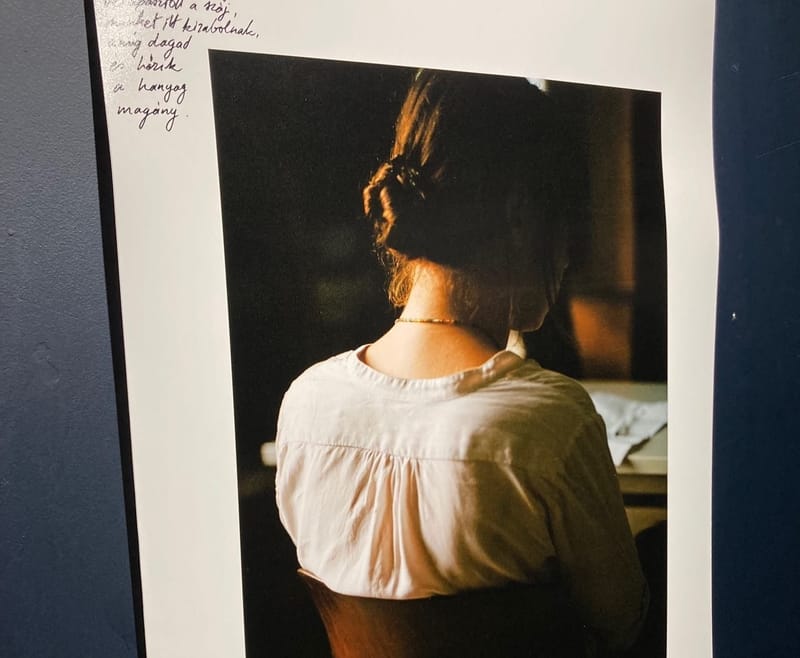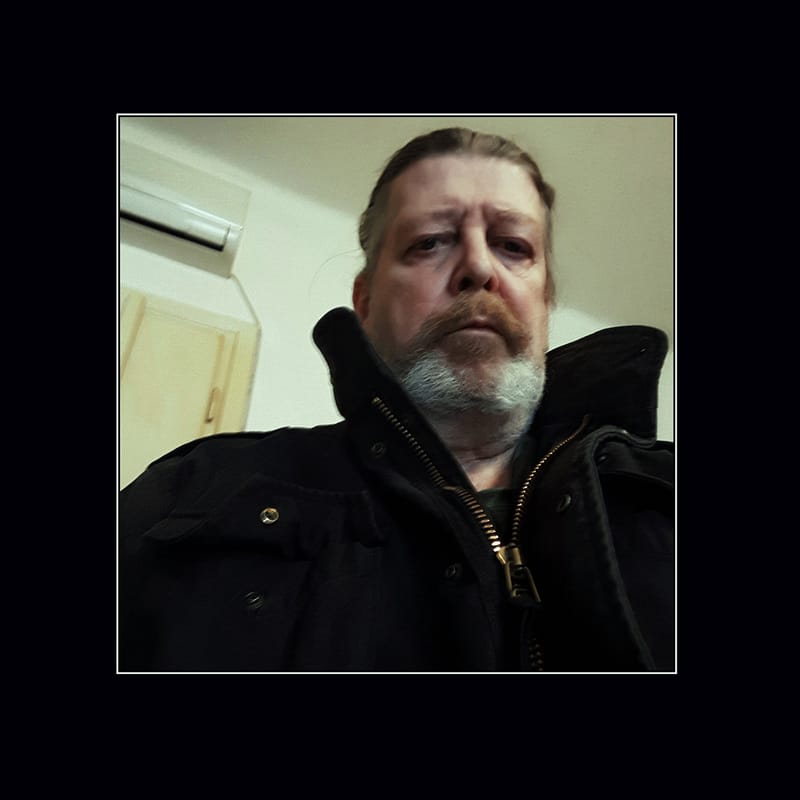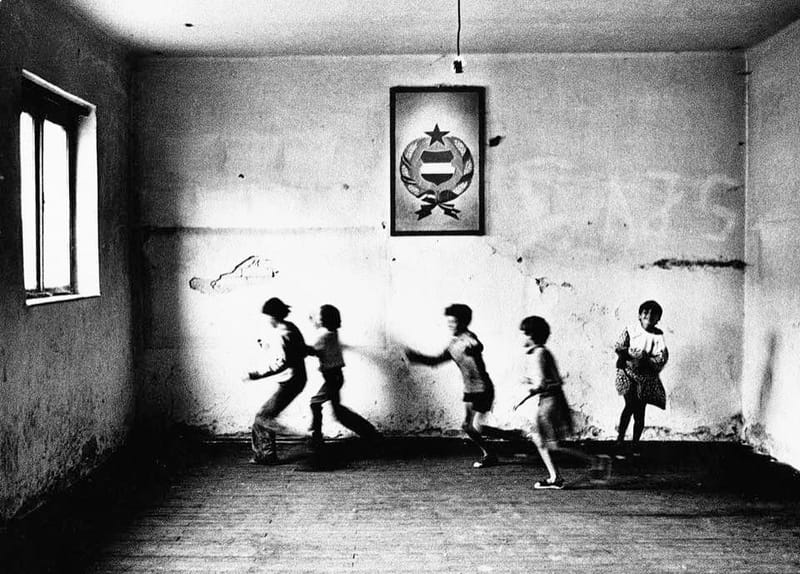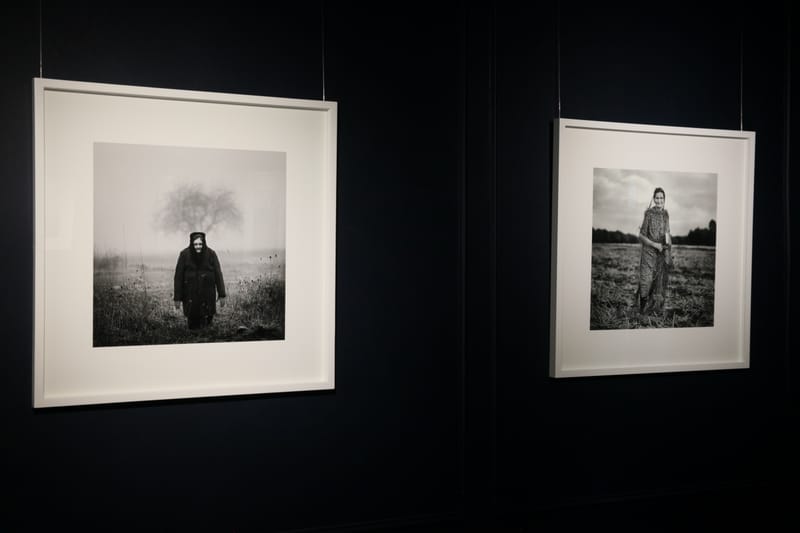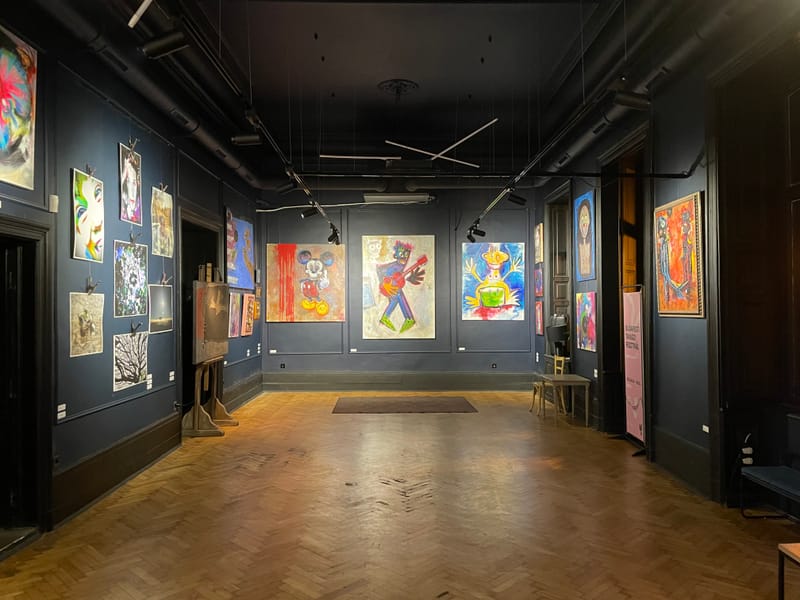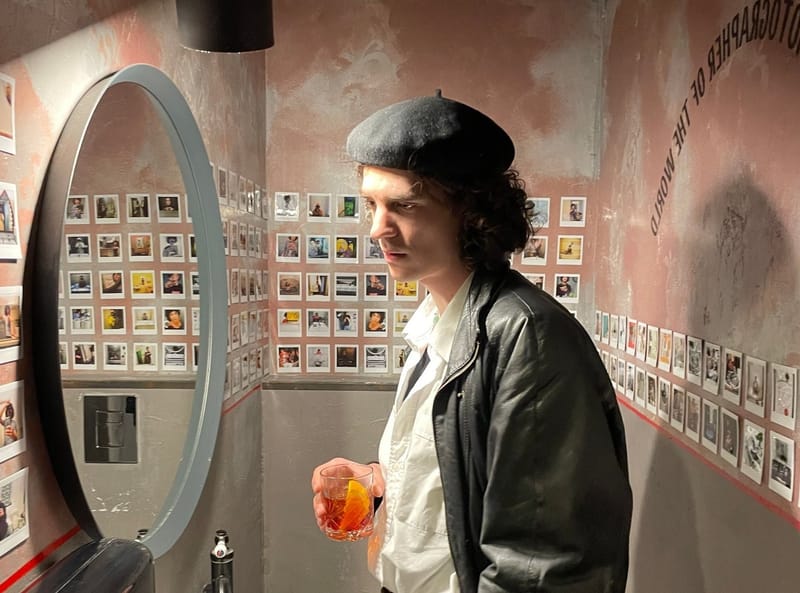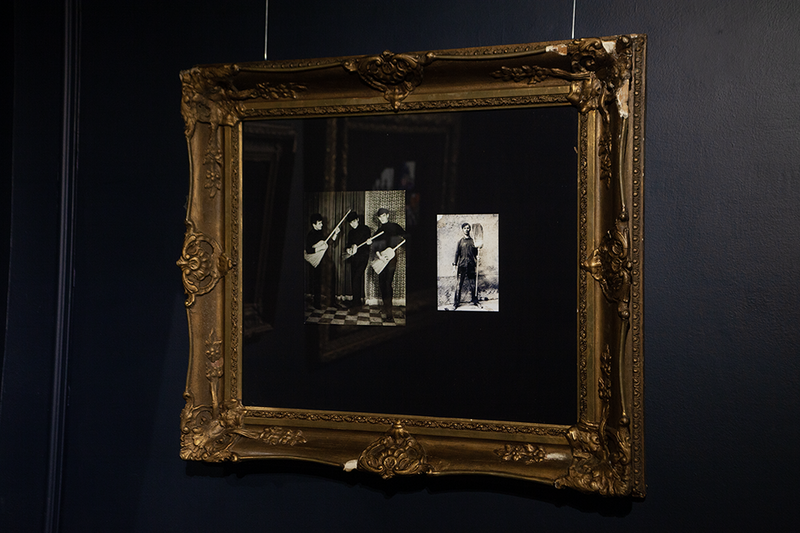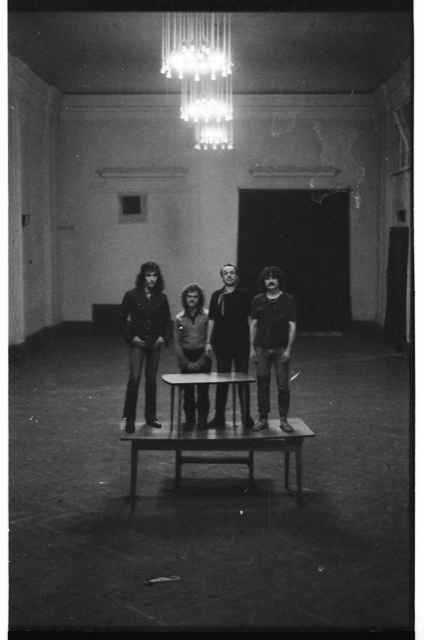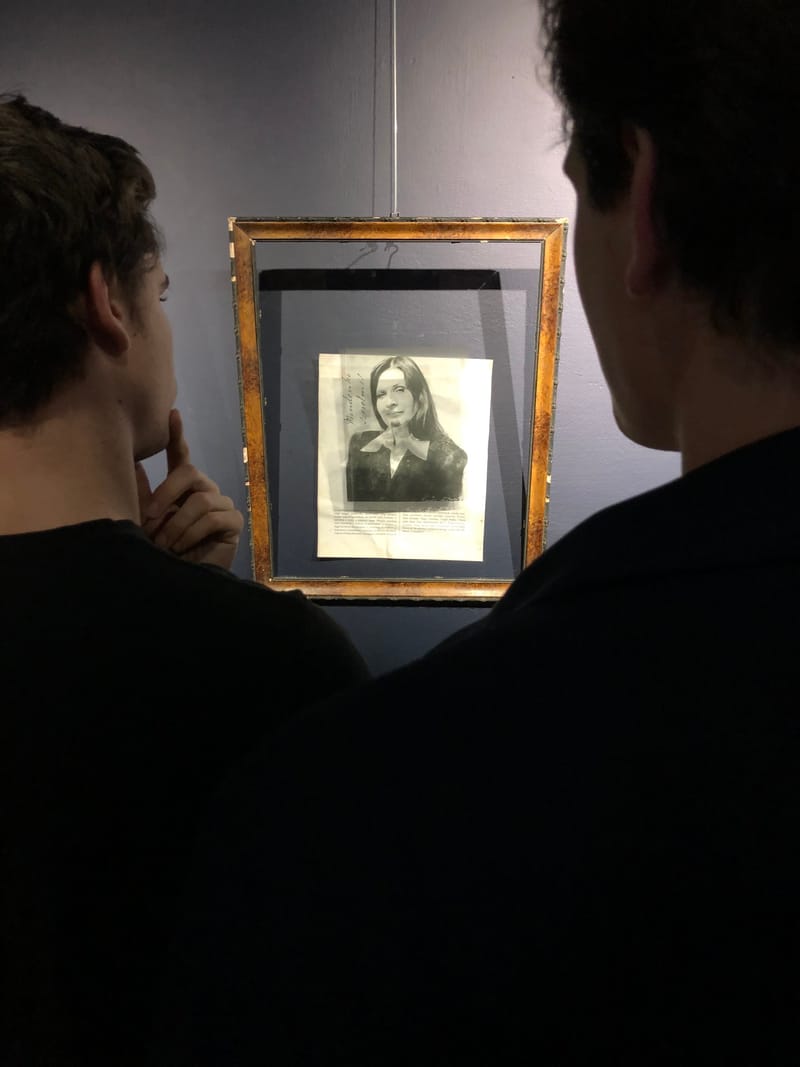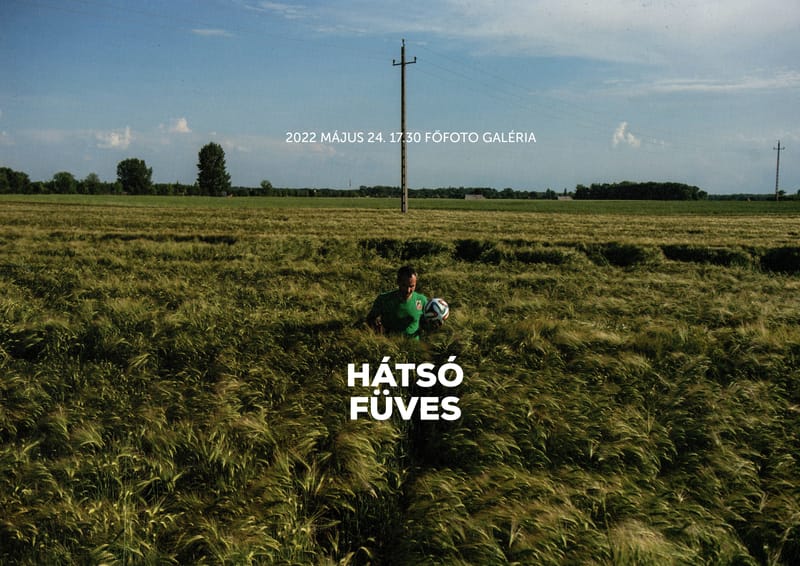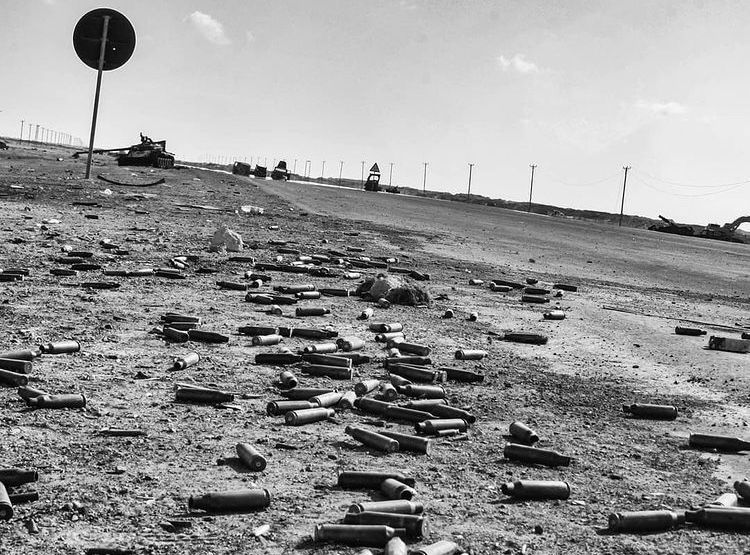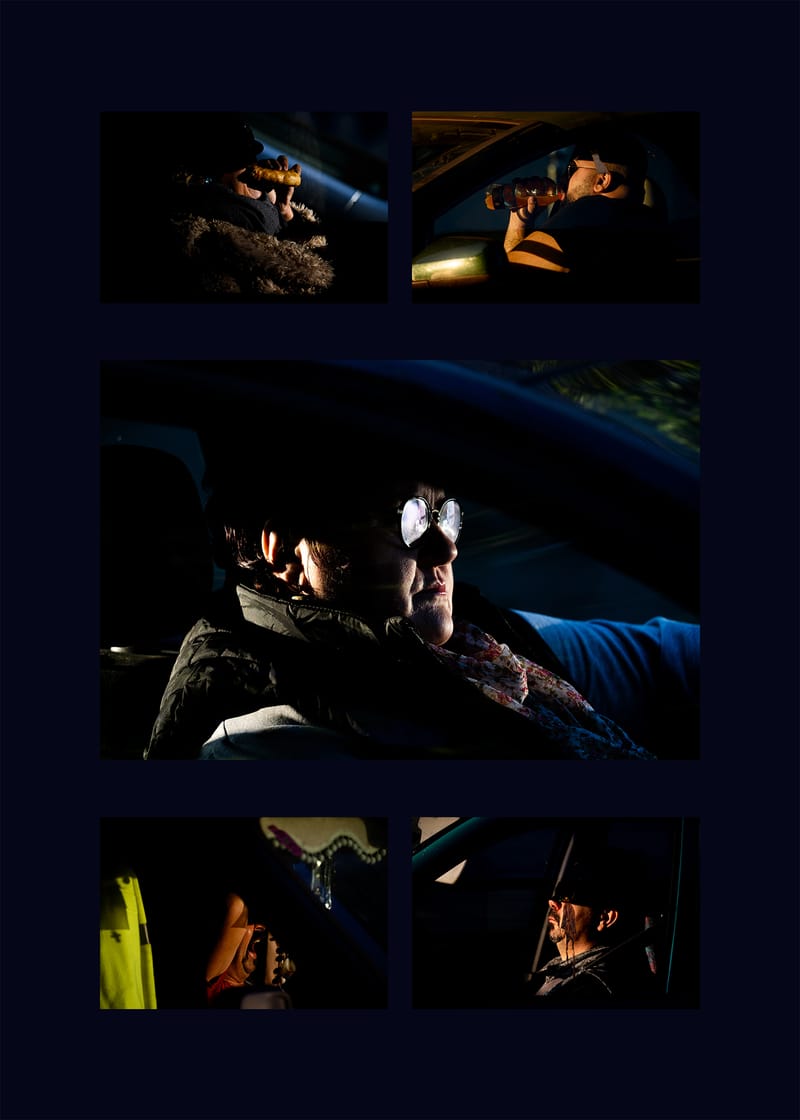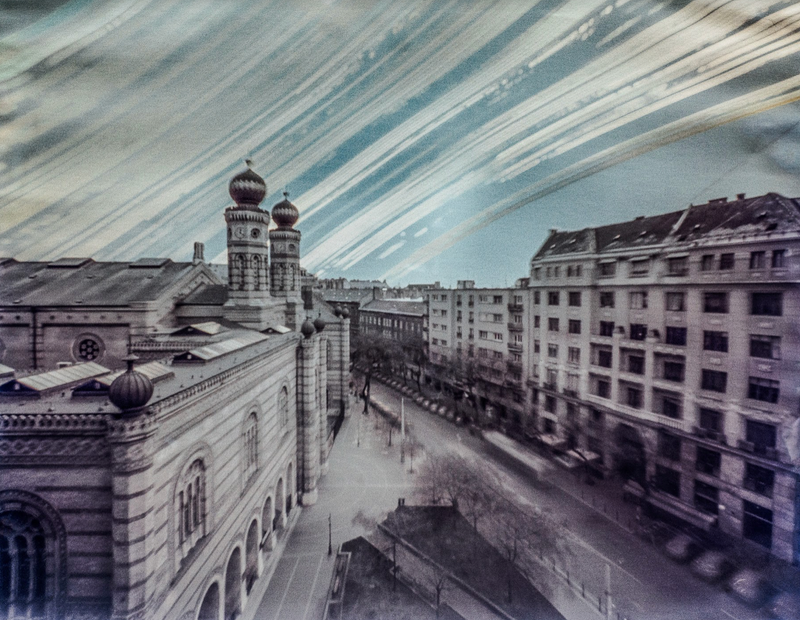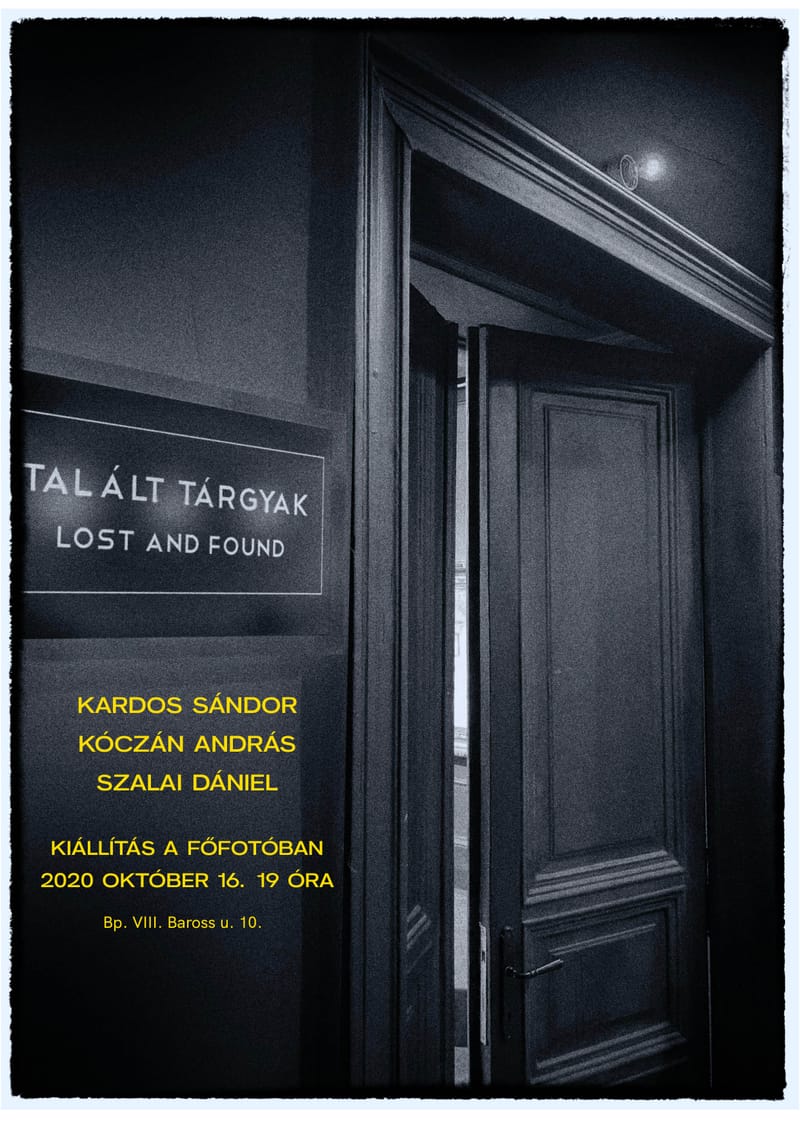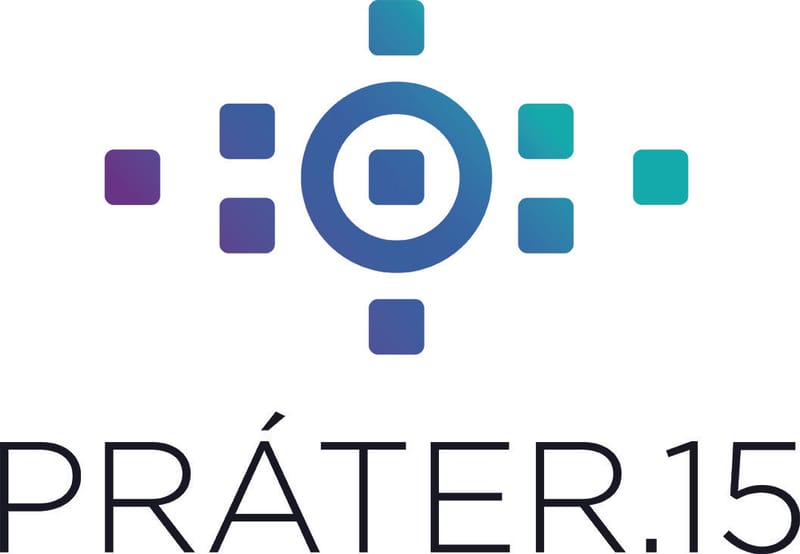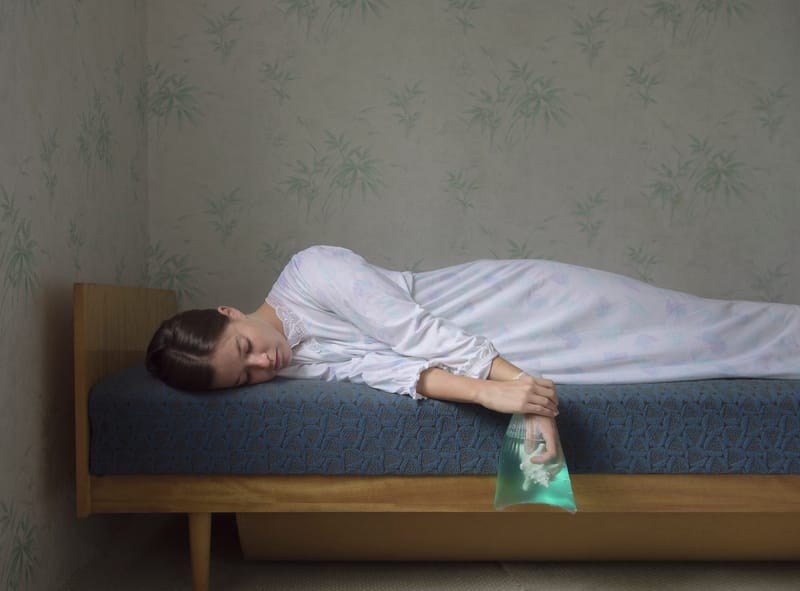Events
1985-ben az Iparművészeti Főiskola Gólyabálján Lugosi Lugo László fotósorozatot készített az ott megjelentekről, Bodor Ferenc narrálásával. 20 évvel később az anyagot könyv formában megjelentette a Kieselbach Galéria, most pedig újabb 20 év elteltével a Főfoto Galéria a könyvből rendez kiállítást egy különleges installációval. Így emlékeznek Lugóra.
Kizlinger Lilla: Nem vagy itt és nem is voltál Egy kiállítás az elmúlt 8 évemről, vele. Ez egy temetés. Magunkat temetjük el. Eddig minden hozzád szólt, és most végre pedig hozzám. A menekülés véget ért, a játszma lezárult. Ez egy szabadság. Viszont úgy lesz helyes, ha a gyászomat tisztességesen lezárom, és elbúcsúzok ettől a 8 évtől. ,,es nem azt jelenti hogy nem szereted csak azt hogy nem tudod most ezt vele csinalni es egyedul elsz ott van lebowski meg, a suli, meg a darab, meg a film minden tok jo lesz,, Stockholm, 2021 augusztus
Between December 7 and 16, Főfoto can visit an exhibition related to the film Magyarázat mindarre, in which the pictures taken on the set form a special unity with personal, handwritten poems. The shooting of the independent Hungarian film Magyarázat aller took place in the summer of 2022, and its moments were captured by Réka Vajda. The settings, compositions and captured moments of the images go far beyond simple booth photos. Through Réka's color and black-and-white, medium-format images, we see some scenes of the film from a slightly different perspective. Gábor Reisz, the film's director, wrote a couple of lines of poetry every day on the way to the shooting location. Sometimes these lines tell a story, sometimes they convey in a completely associative way the mood that defined this extremely intense, tiring but all the more joyful period. Gábor's texts are handwritten on Réka's photos, thereby creating a clear and close connection between film, photo and text that can be freely interpreted by everyone. All the pictures in the exhibition can be purchased with the handwritten poem on them.
Exhibition of the still images of the cameraman who started out as a photographer and later became internationally famous. As the opening of the exhibition, he was remembered by his colleagues and colleagues, with the help of Attila Janisch, Gábor Szabó, Tamás Dobos and István Molinár.
Joint exhibition with the Einspach Fine Art and Photography gallery "If there is a world beyond the edge of existence, the photos of Judit M. Horváth and György Stalter are about this. It is a cruel world: misery, backwardness, destruction - it is not good for us to face it. The sight sticks in the throat, suffocates, you can't get rid of it. And not really when the frozen moments of misery are naturalistic, but when a lyrical interlude - a loving look, a pair of eyes marveling at the world - cuts into our image almost like a whiplash." /Foreword by Árpád Göncz to the book Más Világ: Más Világ: Más Vílág by Judit M. Horváth and György Stalter, published in 1998/
Karczeby - Kivághatatlan Adam Panczuk kiállítása a Főfoto Galériában A Kelet-Lengyelországban beszélt nyelvjárások egyikében, amely a lengyel és a fehérorosz keveréke, azokat az embereket, akik erősen kötődnek a nemzedékek óta művelt talajhoz, „karczebeknek” nevezték. A karczebek puszta kézzel irtották az erdőket, hogy termőföldre tegyenek szert. A Karczeb szót azonban arra is használták, hogy leírják azt, ami a fa kivágása után megmarad - egy gyökerekkel rendelkező tönk, amely a földben marad. Ezt az emberekre is vonatkoztathatjuk: a hatóságoknak még a sztálinizmus idején sem volt könnyű kiirtani, elűzni őket a földjükről. A talajhoz, a földjükhöz való ragaszkodásukért gyakran a szabadságukkal vagy az életükkel fizettek. Haláluk után eggyé váltak a termőfölddel, így maga a talaj is karczeb lett, melyet később utódaik ebben a szellemben is műveltek. A szerző, Adam Panczuk nagyapja temetése után nem tudott szabadulni a gondolattól, ami a pap szájából hangzott el: - Nagyapád egész életében a talajt fürkészte, hogy halála után visszatérhessen hozzá. Panczuk rájött, hogy műveiből egészen addig hiányzott az az erő, amely képes megérinteni a közönséget. A Karczeby szériára két hónapig készült: jegyzeteket készített, beszélgetett az emberekkel, bőven szánt tehát időt az előkészületekre. A sorozat képeiről sugárzik mély kapcsolata képeinek alanyaival, és bár a figurák helyenként pózolnak, nagyon is hitelesek maradnak. A portrék komolyak, de átitatja őket valamiféle könnyedség. Egyszerre tudunk gyönyörködni és mosolyogni, és talán megértjük, mit jelent karczebnek lenni.
The exhibition lists the old and new works of visual artist Tibor Kiss, musician-lyricist of Quimby and Aranyakkord.
Exhibition by Orsolya Török-Illyés in the women's washroom of Főfoto. 4 years of persistent selfies in public toilets, train stations, McDonalds, gas stations and other places.
A családi archívumok képeiből összeállított tárlat különlegessége, hogy a kiállított fényképek, ahogy az emlékek is, szépen lassan elhalványulnak, míg végül teljesen eltűnnek. A Mielőtt eltűnünk című kiállítás alkotásai szó szerint csak november nyolcadikától december ötödikéig voltak láthatók, hiszen ahogyan a cím is utal rá, szépen lassan eltűntek a kiállítótérből. A képek persze maradtak, csak napról napra egyre jobban kifakultak, mielőtt végleg eltűntek. A magyar családoknál – főképp az idős generáció esetében –, illetve különböző intézményeknél, szervezeteknél számos olyan fénykép és dokumentum lelhető fel, amely történelmi értékkel bír. Ezek a fényképek és dokumentumok sérülhetnek, megsemmisülhetnek az évek során, amivel nemcsak a tárgy, hanem a kapcsolódó történet, emlék és ezzel együtt az érték is elveszhet. A kiállítás szeretné ezeket az emlékeket, valamint a hozzájuk kapcsolódó történeteket megőrizni az utókor számára, a kollektív emlékezet részévé tenni, ezáltal lehetővé téve a nemzettörténeti elemzések kiegészítését, kutatások támogatását. Az ötlet alapján épp a kiállítás záróeseményén jelent meg a kiállítással azonos című exkluzív fotóalbum, ahol a magyar családok legféltettebb kincseinek megmentett képei tovább láthatóak. Ezek a fotók már nem tűnnek el, és talán mi magunk is egy kicsit nehezebben.
"Where did it go?" – An exhibition of the legendary but forgotten album covers of Hungarian pop history. At Főfoto Galéria, we have now collected popular pop culture images that were once found in Hungarian apartments in millions of copies. The whole country knew these photos, filmed them, looked at them, loved them, because they were an inseparable part of the experience that people took home when they bought the record. The album cover was a separate genre. He defined and managed the image of the ensembles. It was a point of reference. The images on the album cover identified each musical era. We think it's important to elevate these images to where they should have always been. Let's show that these works are real works of art.
Everyone is Petőfi. No joke. More like a game. It is not customary to play with Petőfi. But he loved to play. With his own fate and life as well. We have a daguerreotype and several legends from Mázsány. How many faces are there? Petőfi is the Hungarian ideal. The Hungarian poet. The most popular. The most patriotic. The most popular. The most revolutionary. The divine talent, the romantic eternal lover. The poetic genius. The star, the conscience of the people, the mystical liberal, the religious republican, the incompatible, the troublemaker, the bad soldier, the martyr. All Petőfi. Everyone is Petőfi.
There are many things worth recording that cannot be done with a camera. However, photographs undoubtedly have one great quality: they are not really debatable. It is very difficult to explain to the group of friends that the person who took the photos is actually an obnoxious person who was not even there, and what he is talking about did not even happen. There is no fantasy in the world in a documentary photography. Everyone can see what is written on it, and if fraud has occurred, it can be easily found out. As time passes, every written word becomes debatable, but a photograph never is. They are not refracted according to whether their creator is politically sympathetic or not, friend or foe, male or female. I see this as the most important feature of my photographs, which is why this album was created, from the images of which I selected the exhibition. Sándor Jászberényi
"When the first and last rays of the sun shine down the long boulevards of Budapest at a low angle, directly illuminated by the windshields of the cars in traffic, it is an excellent opportunity for some essence of the life of the motorists on the street, otherwise invisible on gray weekdays, to come into the spotlight and to be immortalized by stopping at the red light. the shadow of the folded down awning ensures natural eye contact, so we can concentrate impersonally on the characters and actions, or on the play of details, lights and colors."
The world's loneliest cameras stood in Budapest for six months, perfectly hidden. No one knew that the silver in the boxes was giving way to the light, drawing out something that was there, but not like this and not then. The time spent in solitude for half a year left a special mark on the light-sensitive surface. The light source has changed into a point source, so it is now able to create a gravitational field, which this time absorbs the viewer. The streets are deserted, the spaces are empty, but this is actually just an illusion: such a long exposure time is enough to make all the townspeople turn around in front of the cameras, yet the scene seems deserted. The time stands in a strange way in the pictures, the vegetation has not yet fully grown, there are no tendrils creeping on the side of the strip house on Szőlő Street, but the people have already disappeared, the city seems to have always been just a set. The present shows the future, as silver and light wanted. Péter Egyed's Napnapló exhibition at Főfoto from the second of February
One photographer, a sun studio out of a truck, one year, and lots of portraits. A country against a white background, Richard Avedon's meeting with Lajos Parti Nagy. Photos by János Krasznai
Petra Collins a Főfotóban A torontói születésű Los Angelesben élő Petra Collins azon kevés művészek egyike, akinek munkái nemcsak a 2010-es évek vizuális kultúrájára voltak hatással, hanem kollektív vizuális tudatunkra is. Collins nemcsak fotós, hanem rendező, és modell is, az egyik legmarkánsabb képviselője az úgynevezett újhullámos feminizmusnak, olyan művész, aki soha nem fél a nőiségről beszélni, hol humorral, hol megrendítően, hol esztétizálva, de mindig őszintén. Collins fontos üzenete a nők számára, hogy bátran fejezzék ki sebezhetőségüket, érzékenységüket és szexualitásukat kamerán innen és túl. Munkái a legnevesebb magazinokban tűnnek fel, de készített kampányokat a Gucci és az Adidas számára is. Ezek közös jellemzője, hogy a legnagyobb márkáktól is szabad kezet kap az alkotáshoz, annyira egyedi világot képes a képein teremteni. Büszke magyar gyökereire, és fontos számára a családi kötelék, Magyarországon készült sorozatán családtagjai szerepelnek. A képek a gyermekkor legboldogabb, felhőtlen nyarainak erednek nyomába, amikor a világ még csupa rejtély, jókedv és rácsodálkozás. Toronto born, Los Angeles based Petra is one of those few artists whose works not only influenced the visual culture of the 2010s but also our collective visual consciousness. Collis is a photographer, a director, and a model, one of the most forceful representatives of the so-called New- Wave Feminism. An artist, who is never afraid to speak about her femininity either with humor, or by shocking the viewer, yet remaining honest every time. Collins’s important message to women is to bravely express their vulnerability, sensitivity, and sexuality from either side of the camera. Her works appear in the most prestigious magazines, she contributed to campaigns for Gucci and Adidas, among others. The common feature in these projects is that she gets a free hand from the biggest brands thanks to the distinct aesthetic she creates in her pictures. She is proud of her Hungarian origin, and family bonds are very important for her. In the series made in Hungary her family members appear. The pictures trace back the happiest, carefree childhood summers when the world is still all mystery, cheerfulness and wonder.
Talált tárgyak/ Lost and found Szalai Dániel Belongings of the Road (2010-2011) sorozata Budapest egyik elővárosi autópályája mellett talált, jellemzően autókból kidobott tárgyakból áll. Ezekből a talált tárgyakból választott ki a művész 36 érdekes darabot, esetenként valaha volt személyes tárgyakat, amelyeket nagy felbontású fotóvá szkennelt, melyekből a Főfoto Galéria most 15 darabot mutat be. Kardos Sándor sorozata néhány eddig még nem publikált különös történetű fotóból áll. Ezeken nemcsak a fotón látható jelenetnek, hanem megtalálásuknak és a felületükön keletkezett roncsolódásoknak is története van. A negatívok nem szakszerű tárolásakor az idő nem csak a témán hagy nyomot, hanem fizikai elváltozások is történnek a hordozón, hajlamosak a penészedésre, töredezésre. A Kardos által megtalált képeken ezek az elváltozások nem viszolygást keltenek, hanem a maguk esetlegességével, elszíneződéseikkel plusz jelentést adnak, a kép részévé válnak. Egy hirtelen jött vihar, a grönlandi felföldön nemcsak jégesőt tartogat, hanem nem várt meglepetést is. Kóczán András a vihar elől barátaival egy fjord-szerűség elhagyatott házába húzódott, ahol egy exponált, de még előhívatlan filmtekercset talált. Hazaérve öccsét, Gábort bízta meg a kidolgozással. A képeken egy inuit család fényképezőgéphez való különös viszonya tárul fel, melyhez a komor, de napsütötte grönlandi táj szolgáltatja a díszletet.
Introducing the Prater.15 group of photographers Fifteen different people, fifteen different pasts, life paths and interests, connected by two things: a love of photography and a professional cradle, a common school. These two things guided the newly graduated photographers in the summer of 2020 to organize their debut exhibition. Today, it is a unique thing in Hungary, and in recent decades there has been no example of a class just leaving school to look for a gallery to present their work. But the class leaving the “Prater” didn’t want to line up, so he decided to take a big step. Their determination was reinforced by the fact that, due to the special situation in the spring, they were unable to say goodbye to school in a worthy way and close the common years. Thanks to the lucky change in conditions, one of the iconic venues for photography, Főfoto, is hosting an exhibition that can be viewed for two weeks. Venue of the exhibition: Főfoto, 1085 Budapest, Baross utca 10. Date: 27 August - 10 September 2020 Opening ceremony: 27 August 2020 7 pm Admission to the exhibition is free of charge. The exhibition was organized by photographer Péter Kis
I put the spectacle in my head before I took a photo. I drew ideas from dreams and fantasy, says Matti Varga, whose 3 series of pictures can be seen in the Main Photo Gallery. Another Rome - Another Rome Stranger I Know - Familiar Stranger After August- After August
